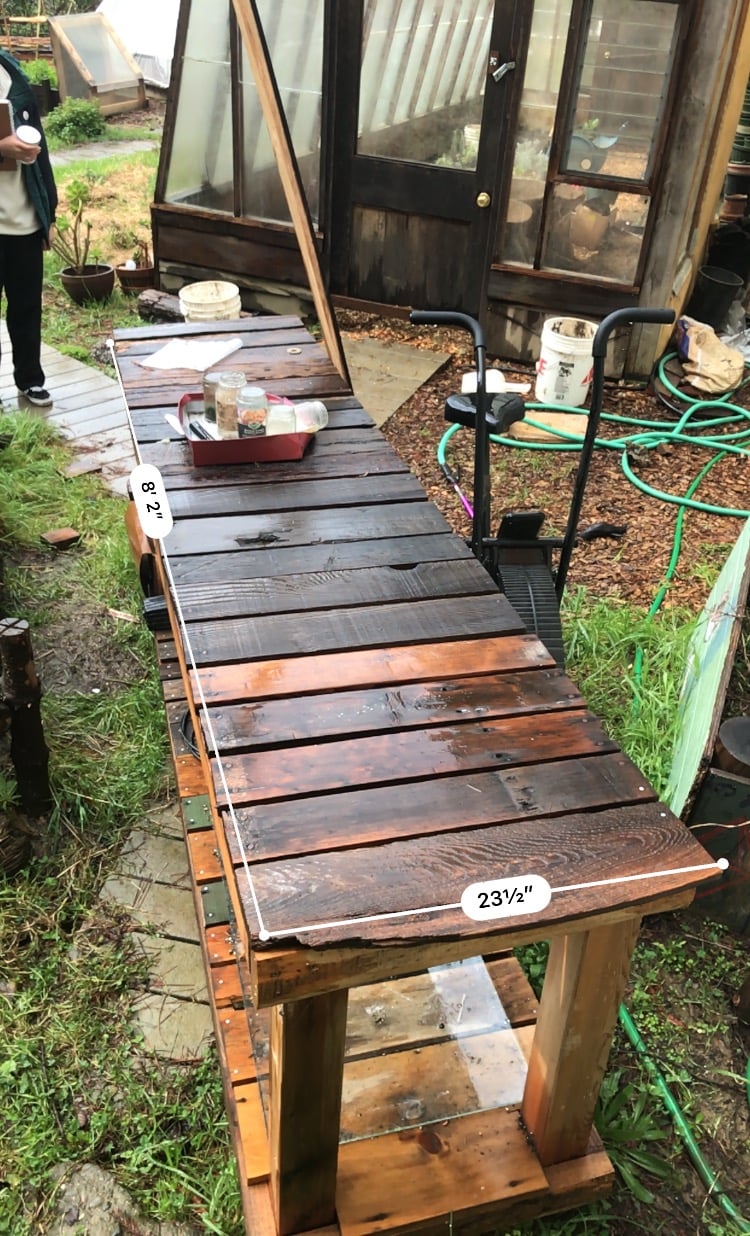No edit summary |
|||
| Line 32: | Line 32: | ||
===Designing interpretive materials=== | ===Designing interpretive materials=== | ||
According to ______ interpretive materials for composting should include.... | According to ______ interpretive materials for composting should include.... | ||
[[File:CCAT_GHouse_Table.JPG]] | |||
Revision as of 23:34, 20 February 2019
Background
the Four Peppers: Harry Jones, Lauren Virzi and Mario Kaluhiokalani and Amanda Madden are the head of the Greenhouse Water Reclamation Project at Campus Center of Appropriate Technology (CCAT) located in Humboldt State University. The proposed project will be in progress for the duration of 13 weeks toward the end of the 2019 Spring Semester. CCAT is in need of a way to recycle the water used for the plants in the greenhouse. As CCAT strives to be a sustainable property, hydrating plants tend to produce a lot of water loss over time. Our job is to figure out how to make this water of use.
Problem statement
The objective of this project is to design and construct a system that will recycle the water used to hydrate CCAT greenhouse plants.
Literature Review
This is a review of the available literature pertinent to the a specific project.
Water reclamation basics
The reclamation of water from sources such as wastewater, groundwater, and rainfall is a critical relief to water needs across the globe. [1]
Composting concerns
Short paragraph on the concerns.[2]
Types of reclamation
Short introduction to types of composting. [3]
Type 1
Type 1 composting is a system that utilizes..... Make sure to include description [4], advantages and disadvantages, and/or have a comparison matrix.
Type 2
Type 2 composting is a system that utilizes..... Make sure to include description, advantages and disadvantages, and/or have a comparison matrix. [3]
Type 3
Type 3 composting is a system that utilizes..... Make sure to include description, advantages and disadvantages, and/or have a comparison matrix.
Designing interpretive materials
According to ______ interpretive materials for composting should include....
- ↑ Novotny, Vladimir, et al. Water Centric Sustainable Communities: Planning, Retrofitting, and Building the next Urban Environment. Wiley, 2010.
- ↑ Another example of footnotes.
- ↑ 3.0 3.1 This is an example of a named reference. You can use these named references to repeat citation content throughout the document.
- ↑ This is a third example of a plain footnote.
